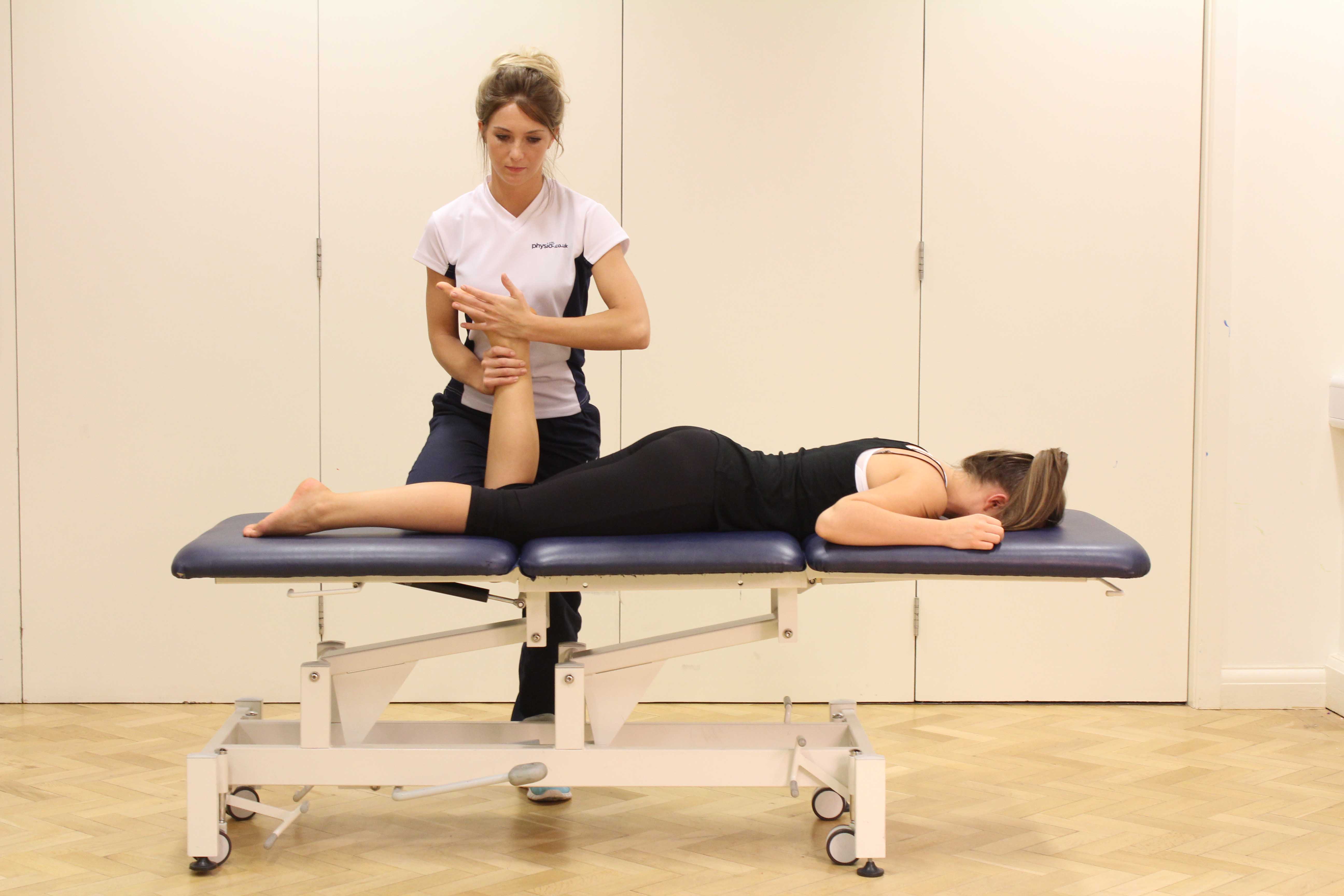What is accessory navicular syndrome?
Accessory navicular syndrome is when there is an extra piece of bone or cartilage in the foot next to the navicular bone, causing pain.
The navicular is one of the bones that make up the foot and it is located on the inside of the foot. An accessory navicular is an extra bone or piece of cartilage next to the navicular. The posterior tibial tendon attaches at the same point and the accessory navicular is within this tendon. Accessory navicular syndrome is when the bone/cartilage or posterior tibial tendon becomes aggravated or painful.
 Above: Mobilisations and stretches of the foot and ankle by specialised therapist
Above: Mobilisations and stretches of the foot and ankle by specialised therapistHow does accessory navicular syndrome happen?
An accessory navicular is a condition that is present from birth (congenital) and is not a common condition. People who have an accessory navicular may never have any problems but people who do have problems may develop accessory navicular syndrome. This can be caused by:
- Overuse of, or large loads through, the posterior tibial tendon
- Trauma to the foot
- Long term (chronic) irritation from footwear rubbing against the bone/cartilage
- Flat feet creating extra strain on the posterior tibial tendon
What are the symptoms of accessory navicular syndrome?
If the cause of accessory navicular syndrome is trauma to the foot then pain will be sudden and will be made worse by activity. Otherwise, pain will have a gradual onset. Other symptoms may include:
- A visible bony spur on the inside of the foot
- Redness and swelling of the bony spur
- Pain in the area around the bony spur especially during or after activity
 Above: Passive stretch of the achilles tendon performed by specialist therapist
Above: Passive stretch of the achilles tendon performed by specialist therapistWhat should I do if I have accessory navicular syndrome?
If you have or suspect you have accessory navicular syndrome, you should consult a physiotherapist as they will be able to relive symptoms and help to prevent future occurrence. In the meantime you can apply ice to the inside of the foot using a bag of frozen peas or crushed ice wrapped in a damp cloth for 15–20 minutes over the inside of the foot every 1–2 hours.
What shouldn’t I do if I have accessory navicular syndrome?
If you have or suspect you have accessory navicular syndrome, you should not continue activity that aggravates the problem such as running or wearing footwear that irritates the area. The problem needs to be rested to give it a chance to settle down and heal so that treatment can commence.
Physiotherapy treatment for accessory navicular syndrome.
Physiotherapy can relieve symptoms of accessory navicular syndrome and help to prevent re-occurrence in the future. Treatment may include:
- Immobilization of the foot by a cast or boot to rest the problem and allow inflammation to reduce
- Stretching exercises
- Strengthening exercises
- Orthotics (insoles) to correct the position of the foot to reduce pressure on the affected area
 Above: Mobilisations and stretches of the foot and ankle by specialised therapist
Above: Mobilisations and stretches of the foot and ankle by specialised therapistCould there be any long-term effects from accessory navicular syndrome?
Physiotherapy treatment should resolve the problem; however it can still re-occur, even after successful treatment. In this case physiotherapy treatment will be used again to resolve the problem. If the problem becomes repetitive or if physiotherapy treatment does not resolve the problem then surgery can be an option. The aim of surgery is to remove the extra bone/cartilage to remove the problem completely.
Please call Physio.co.uk on 0330 088 7800 to arrange an appointment or book online today.

 0330 088 7800
0330 088 7800


































